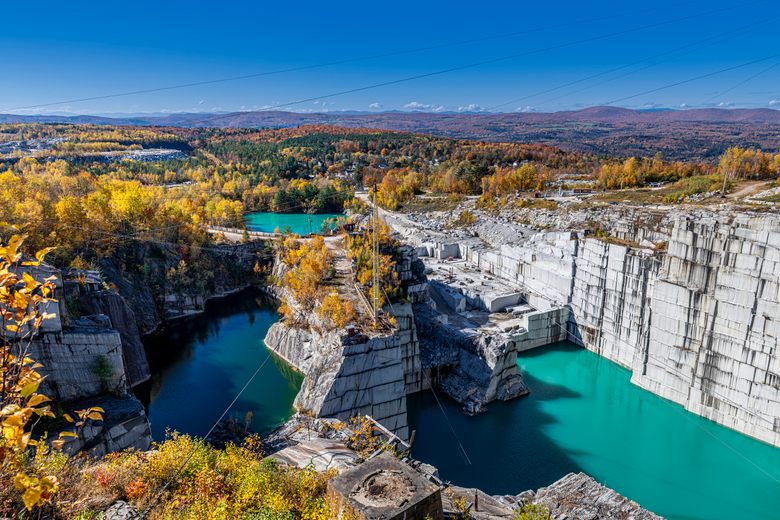Unearthing the Rich History and Lasting Practices of Granite Quarrying
As we stand on the precipice of uncovering the detailed tapestry of granite quarrying, a trip via time discloses not just the physical act of removing stone yet also the cultural and historical value woven into the very fabric of this practice. From the old beginnings that laid the foundation for contemporary quarrying techniques to the sustainable practices that are shaping the future of this market, each carve mark on granite surface areas narrates waiting to be unearthed (granite quarries in south africa). The tradition of granite quarrying stretches much past simple extraction; it is a testimony to human ingenuity, resilience, and the long-lasting appeal of this majestic stone
Old Beginnings of Granite Quarrying
Dating back to ancient people, the technique of quarrying granite has been an integral component of human background and building advancement. The earliest evidence of granite quarrying go back to ancient Egypt, where huge pyramids and complex sculptures were crafted from this durable rock. The Egyptians made use of primitive tools to extract granite blocks from quarries, showcasing the significance of this product in their monumental buildings.
Progressing in history, the Greeks also made considerable contributions to the quarrying of granite. The Greeks utilized granite in various architectural marvels, such as temples and statuaries, showing their skill in shaping and carving this durable stone. The Romans even more improved the strategies of quarrying granite, employing sophisticated tools like knives and hammers to essence and shape granite for their renowned frameworks.
Through the centuries, the practice of quarrying granite has progressed, with modern technologies improving effectiveness while keeping the timeless allure of this natural rock - granite quarries in south africa. From old human beings to contemporary building contractors, the tradition of granite quarrying proceeds to form our world
Advancement of Quarrying Methods
The evolution of quarrying strategies has been noted by a continuous development in the direction of higher performance and accuracy in drawing out granite. From the primary approaches utilized by our ancestors to the sophisticated technologies used in contemporary quarrying operations, the industry has actually undertaken considerable developments. Early quarrying methods involved hands-on labor with standard tools such as chisels, hammers, and wedges to extract granite blocks from the earth. As worlds advanced, strategies like fire-setting and primitive explosives were presented to promote the removal procedure.
In more recent times, the introduction of equipment reinvented the quarrying industry, making it possible for faster removal prices and increased efficiency. Technologies such as diamond cable saws, high-pressure water jets, and pneumatic drills have come to be basic in modern-day quarries, enabling precise cutting and reduced waste. Moreover, innovations in computer-controlled equipment and 3D modeling have actually maximized quarrying operations, causing marginal ecological influence and improved sustainability techniques. As the demand for granite remains to climb, the evolution of quarrying strategies remains essential to meeting industry requires efficiently and sustainably.
Social Significance of Granite
Granite holds an extensive cultural relevance throughout numerous people because of its enduring presence in building work of arts and respected monoliths. From the impressive pyramids of Egypt to the intricate carvings of the Angkor Wat holy place in Cambodia, granite has been a product of selection for sharing majesty and longevity in social heritage. In ancient Rome, granite columns decorated holy places and public buildings, signifying stamina and permanence. The cultural relevance of granite expands past its physical attributes; it personifies durability, security, and eternity, making it a sign of withstanding legacies and traditions.

Sustainable Practices in Quarrying
Among the rich history of granite quarrying and its cultural value exists an expanding focus on sustainable techniques within the industry. As environmental recognition and concerns concerning source deficiency have actually increased globally, the quarrying sector has actually progressively welcomed sustainable techniques to reduce its influence on the atmosphere and bordering neighborhoods.

In addition, recovery and recovery of quarry sites post-extraction are important to sustainable practices. By recovering quarried areas to an all-natural or useful state, such as developing wildlife habitats or recreational areas, quarriers can offset the ecological footprint of their operations and add favorably to the neighborhood community.
Legacy of Granite Quarrying
With a historical backdrop steeped in craftsmanship and commercial progress, what enduring effect has granite quarrying left on the landscape of contemporary society? The legacy of granite quarrying goes beyond mere removal practices; it has actually formed architectural wonders, metropolitan landscapes, and social heritage worldwide. The long lasting nature of granite has actually made it a preferred selection for monoliths, buildings, and facilities, standing as a testament to the skill and virtuosity of quarry workers throughout generations.
Additionally, the financial footprint of hop over to here granite quarrying can not be neglected. The sector continues to offer work chances and drive regional economic situations in regions where granite removal prevails. It has actually also stimulated technical advancements in quarrying strategies and devices, causing a lot more effective and sustainable methods.
In regards to sustainability, the tradition of granite quarrying consists of efforts to alleviate ecological influences via improvement jobs and accountable resource management. By balancing economic rate of interests with ecological stewardship, the sector makes every effort to make sure that future generations can continue to sites profit from this enduring natural deposit.
Conclusion

Comments on “The Surprise Gems: Exploring Granite Quarries in South Africa”